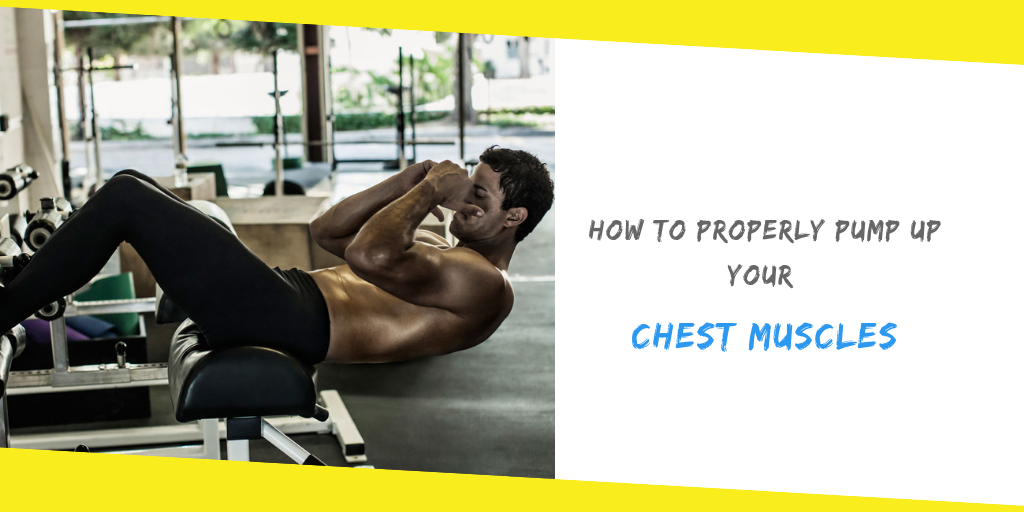How to Properly Pump Up Your Chest Muscles

If you are reading this article, you most likely have a not-so-good chest structure (like most of us – not judging you over here) and you want to pump your chest muscles to look like what you can be proud of. If you want this, you are not alone. That’s why we are here (what are friends for?). we will be giving you science-based advice to not only pump up your chest muscle but to increase the strength of your chest muscle while at it. But before we do that, we will give you some exercise regimens you can try out which will give you awesome results for your chest.
Contents
ToggleChest exercises for size and strength:
While we will give you some tips about having a great chest, later on, we are just going to explain different types of chest exercises you can do in this session.
Low-incline chest press:
This exercise targets your upper chest, especially your pectoralis major which is a muscle in your chest responsible for some of your arm movement. We recommend you use a dumbbell instead of a barbell for this exercise to prevent soreness in your elbows. Here are some steps for doing this exercise:
- Use the lowest incline possible on your incline bench
- Rest your back comfortably on the bench and carry your dumbbells (make sure you have the right weights on your dumbbells for this exercise)
- Align the dumbbell with your chest in a way that your palms face away from your face and your thumbs face each other (remember you are holding the dumbbell in a tight fist). An easier way to visualize this is to hold the dumbbells the same way you would hold barbells during a bench press.
- Push the dumbbells up away from your chest for about two seconds till your arms fully extend and then slowly drop the dumbbells bells back to your chest for another 3 seconds to make a rep.
Press up slider:
This is similar to a push-up and this exercise targets the upper and lower parts of your chest. Here are some steps to do this exercise
- Get into a classic push up position
- Lower your elbows and body to the extent that your body hovers close to (but does not touch) the ground
- Once you get to this position, slide yourself backward till your nose is aligned with your arms (do not touch the ground).
- Then slide yourself forward till your lower chest aligns with your arms
- Then slide yourself into your original position then slowly lift yourself up away from the ground
Bench press:
This can be done on a flat or inclined surface if you want to exercise your upper and lower chest you can incline the bench and place your hands wide apart from each other. If you want to exercise your inner chest, you can close your arms together:
- Rest on a flat or slightly inclined bench
- Place the barbell or dumbbell close to your chest either on a wide-apart grip for the upper chest and lower chest, or you could grip the barbell with your arms close to each other to exercise your arms and inner chest.
- Push the barbell or dumbbell away from your chest to the full extension of your arms for about 3 seconds.
- Then bring back the barbell or dumbbell close to your chest for the next 3 to 6 seconds (it is important that you do not just drop the weights).
There are other exercises you can do that would be of great benefit to your chest muscles. You can check out the fitnessator’s blog for more information. Let’s talk about some tips on working out for your chest muscles.
Tips for getting bigger and stronger chest muscles
- Compared to the arm muscles, studies show that the chest muscles grow early on and continue to grow during exercises. However, some chest muscles like your upper chest can be very stubborn and may not grow easily as other muscles of the body. You can check the fitnessator’s blog for a simple breakdown of the anatomy of the chest. Or, you can look up an anatomy textbook if you think you can understand any of that stuff.
- While you are building your chest, you also want to build your strength. The rules apply to chest exercises too. Heavyweight low rep exercises build more strength while moderate weight moderate rep exercises build up more muscles. However, the muscles built up with moderate weight is not significantly lesser than muscles built using heavier weights.
- You must find out what your 1-RM is before you exercise. This will help you determine what weight you would use for your moderate or heavy weight. First, start with a weight you can carry. Like maybe 40kg. Increase the weights by 5kg (2.5kg on both sides) until you get to the point where you cannot contract your arm muscles or extend your arm muscles fully (depending on the exercise). This is your 1-RM (or one-rep-max). You need to carry about 75% of this weight for moderate weight and about 85% – 90% of this for heavy lifting exercises. These include exercises like bench press and low-incline chest press.
- You can either start light and go heavy or do the reverse whichever is more convenient for you. You can do about 3 – 4 sets of 4 – 6 reps of heavy weight exercise, and move to 3 – 4 sets of 8-12 reps for moderate weight exercise. Lightweight exercises below 65% of your 1-RM are useless. So, knowing your 1-RM is really important for any exercise.
- Don’t forget your diet, eat well so that your exercises do not eat you well. If you eat a quality diet, you will get good gains from your exercises.
- And finally, don’t forget to check out the fitnessator’s blog. They have a lot of information over there that are useful and they explain a lot of the points mentioned here for more detail. Seriously, don’t forget to check our fitnessator.
Recommended For You
What Are the Benefits of CBD Oil?
Most Inside
Most Inside offers high-quality recommendations and valuable updates to enhance all aspects of your life, providing premium guidance and enriching experiences.




